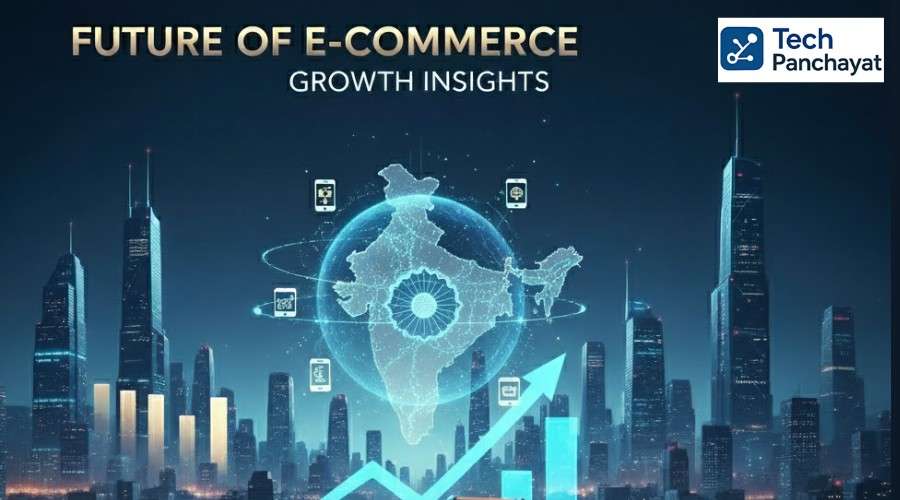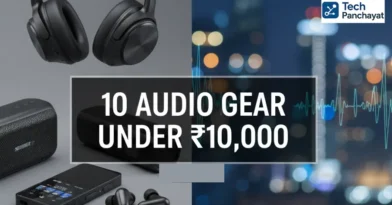The Future of E-Commerce in India is evolving at an unprecedented pace. What started as a niche market concentrated in metro cities like Delhi, Mumbai, and Bengaluru has now extended its reach to smaller towns and rural areas, reshaping the way Indians shop and interact with brands. This rapid transformation is being fueled by a combination of technological advancements, increased internet penetration, and the growing adoption of smartphones, which have made online shopping accessible to a wider audience than ever before.
Digital payments have played a pivotal role in this expansion. Platforms like UPI (Unified Payments Interface), mobile wallets, and card-based payments have simplified transactions, built consumer trust, and created a seamless online shopping experience. Moreover, changing consumer behavior is driving innovation in the sector. Shoppers today are not only looking for discounts but also for personalized experiences, faster delivery options, and reliable customer service. Companies are responding by leveraging advanced technologies such as artificial intelligence, machine learning, and augmented reality to provide personalized recommendations, virtual try-on experiences, and smarter logistics solutions. These innovations are shaping the Online retail growth India creating a market that is both consumer-centric and technology-driven.
Current E-Commerce Market Size and Trends in India
The Future of E-Commerce in India is witnessing remarkable expansion. According to Statista For FY2024–25, the online retail market is estimated to be worth between US$ 125–151 billion (≈ ₹13,04,703 crore), reflecting the strong adoption of digital commerce across the country. Analysts predict that by 2030, the E-Commerce in India could soar to US$ 345 billion, representing a robust CAGR of 18 -20% over the next five years.
This growth is no longer limited to metropolitan cities. Millions of new shoppers from Tier-2 and Tier-3 cities are entering the online marketplace, contributing significantly to the sector’s expansion. Improved internet connectivity, affordable smartphones, and regional language content are enabling these consumers to participate actively, making the E-Commerce trends in India far more inclusive and diverse.
| Driver | Impact on E-Commerce | Example | Potential Benefits |
|---|---|---|---|
| Internet Penetration | Expands market reach | Rural online shoppers | Larger customer base, more inclusive growth |
| Smartphone Adoption | Mobile-first shopping | App-based purchases | Increased app engagement, higher mobile transactions |
| Digital Payments | Faster & secure transactions | UPI, wallets | Builds trust, encourages repeat purchases |
| AI & Personalization | Enhanced customer experience | Predictive product recommendations | Higher conversion rates, improved satisfaction |
| Social Commerce | Increased engagement & sales | Instagram Shopping | Better brand visibility, increased sales |
| Logistics Innovation | Faster deliveries | Dark stores, micro-warehouses | Improved delivery speed, enhanced customer loyalty |
Top Growth Drivers of the Indian E-Commerce Industry
The E-Commerce in India is being propelled by several key factors, including rising internet penetration, the smartphone revolution, and widespread adoption of digital payments. Government initiatives, such as Digital India and ONDC, along with changing consumer behavior, are further accelerating online retail growth across metros, Tier-2, and Tier-3 cities.
Digital India and Rising Internet Penetration
With over 900 million internet users, India’s digital landscape is thriving. Affordable 4G/5G and mobile data plans have enabled millions of first-time online shoppers, especially from rural regions. According to TRAI, the number of broadband subscribers continues to grow steadily, ensuring e-commerce reaches every corner of the country.
UPI, Fintech & Digital Payment Ecosystem
The rise of UPI, mobile wallets, and other digital payment solutions is another critical factor shaping the E-Commerce in India. Seamless, secure transactions build consumer confidence and encourage repeated online purchases. The integration of fintech innovations with e-commerce platforms accelerates adoption and fosters trust among first-time users, further contributing to the rapid growth of the Digital payments in India.
Smartphone Adoption and Affordable Data Revolution
Affordable smartphones and low-cost mobile data are unlocking online shopping for millions of first-time internet users. As a result, the Future of E-Commerce in India is becoming more robust, with new demographics actively participating in digital retail. Mobile-first shopping experiences, app-based discounts, and notifications are enhancing engagement, making it easier for brands to reach consumers anywhere in the country.
Government Policies Boosting Online Retail Growth
Government initiatives like Digital India, ONDC, and Startup India are key enablers of the Future of E-Commerce in India. Policies promoting digital infrastructure, simplified GST compliance, and support for tech startups are allowing businesses to scale faster. By creating a more organized and accessible online ecosystem, these programs help shape the E-Commerce in India in a way that is structured, sustainable, and innovative.
Explore the Latest E-Commerce Deals & Discount Coupons in India
🛍️ Check Live Deals
Emerging E-Commerce Trends Transforming India’s Online Market
Growth of Quick Commerce & Same-Day Delivery
Quick commerce is transforming the E-Commerce offering unprecedented convenience to consumers. Fast delivery options, including same-day and next-day services, are becoming essential in Tier-1, Tier-2, and Tier-3 cities. Retailers are investing in hyperlocal warehouses, dark stores, and micro-fulfillment centers to ensure speed and reliability. This shift not only meets rising consumer expectations but also sets new standards for efficiency in the Future of E-Commerce in India.
Artificial Intelligence (AI) and Augmented Reality (AR) in Shopping
AI and AR technologies are shaping the Future of E-Commerce in India by providing personalized and immersive shopping experiences. AI helps retailers analyze consumer behavior, predict preferences, and recommend products, while AR allows users to virtually try products before purchasing. Brands that adopt these technologies are positioning themselves at the forefront of innovation, ensuring that the Future of E-Commerce in India is both intelligent and interactive.
Social Commerce and Influencer-Driven Sales
Social commerce is redefiningit by , particularly in Tier-2 and Tier-3 cities where peer recommendations carry significant weight. Influencer marketing, live selling, and integrated social platforms are driving higher engagement and sales. By leveraging social networks, businesses are expanding their reach and making this more connected and community-driven.
Voice Search, Vernacular Content & Regional Markets
With a rapidly growing regional language audience, voice search and vernacular content are critical to the Future of E-Commerce in India. Platforms supporting multiple languages allow millions of users in smaller towns to navigate online marketplaces easily, making digital shopping inclusive and accessible. This trend ensures that the Future of E-Commerce in India is not limited by geography or language barriers.
Sustainable Shopping and Green E-Commerce Initiatives
Sustainability is becoming a significant driver of the Future of E-Commerce in India. Consumers increasingly prefer eco-friendly packaging, ethical sourcing, and brands that follow environmentall.y responsible practices. Retailers integrating green initiatives are not only attracting conscious buyers but also setting a precedent for a more sustainable online retail ecosystem, shaping in the long-term
How Tier-2 & Tier-3 Cities Are Driving the Next Phase of Growth
Consumers from Tier-2 and Tier-3 cities now constitute over half of online shoppers in India, making their role critical to the Future of E-Commerce in India. Increasing internet access, smartphone adoption, and regional content availability are fueling this growth. The active participation of these cities ensures that the Future of E-Commerce in India is inclusive, geographically diverse, and sustainable.
E-Commerce Logistics, Warehousing & Supply Chain Innovations
India’s logistics ecosystem is evolving rapidly. Companies like Delhivery, Ecom Express, and Shadowfax are deploying AI-powered routing, automated warehousing, and micro-fulfillment centers to improve delivery times and efficiency.
Rise of D2C (Direct-to-Consumer) Brands in India’s E-Commerce Market
Direct-to-consumer (D2C) models are a major force in the Future of E-Commerce in India. By eliminating intermediaries, these brands can control pricing, build stronger consumer relationships, and offer personalized experiences. D2C adoption is particularly strong among urban and semi-urban consumers, contributing significantly to the growth and evolution of the Future of E-Commerce in India.
India E-Commerce Growth Forecast : Key Statistics & Projections
The Future of E-Commerce in India is projected to expand from US$ 125–151 billion in 2025 to US$ 345 billion by 2030, growing at a CAGR of 18–20%. Tier-2 and Tier-3 cities, coupled with D2C brands and quick commerce models, are the main contributors. These trends highlight that the Future of E-Commerce in India will be dynamic, inclusive, and innovation-driven over the next decade.
Machine Learning & Automation: Future Technologies in E-Commerce
Artificial intelligence, machine learning, and automation are integral to the Future of E-Commerce in India. These technologies optimize inventory, enhance product recommendations, automate customer service, and improve operational efficiency. Companies leveraging these tools are shaping a smarter, more agile online retail landscape, defining the Future of E-Commerce in India.
Changing Consumer Behavior and Future Shopping Trends in India
Modern Indian consumers demand faster delivery, personalized recommendations, and seamless post-purchase support. Meeting these expectations is crucial for the Future of E-Commerce in India, driving adoption of AI, social commerce, and innovative logistics solutions. Consumer behavior continues to shape the trends and strategies that will define the Digital commerce in India.
E-Commerce Opportunities for Indian MSMEs & Startups
For MSMEs and startups, the Future of E-Commerce in India presents immense opportunities. Leveraging D2C channels, social commerce platforms, regional content, and hyperlocal delivery allows smaller businesses to scale efficiently. Innovating in these areas ensures they can actively contribute to and benefit from the expanding E-Commerce technologies in India.
Explore the Latest E-Commerce Deals & Discount Coupons in India
🛍️ Check Live Deals
Conclusion: The Future Outlook of India’s E-Commerce Revolution
The Future of E-Commerce in India is bright and full of opportunities. With technology adoption, digital payments, and growing participation from Tier-2 and Tier-3 cities, online retail is becoming more inclusive and dynamic. Companies that innovate in logistics, AI, and customer experience will lead the next decade of growth.
Moreover, rising smartphone usage, regional language content, and improved internet connectivity are bringing millions of first-time online shoppers into the ecosystem. Social commerce, D2C brands, and quick-commerce models are reshaping consumer expectations and driving faster adoption. Businesses that embrace AI-driven personalization and immersive shopping experiences will stay ahead in this competitive market. Efficient supply chains, faster deliveries, and green initiatives are also key factors shaping it. Overall, the sector promises not only growth but also innovation, inclusivity, and a more connected digital economy.





